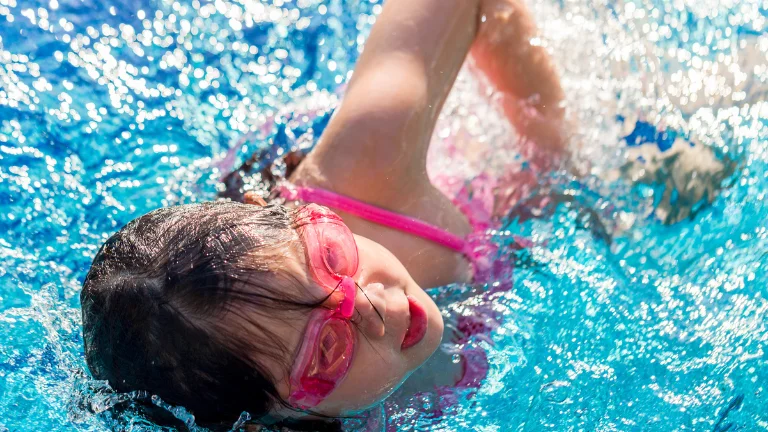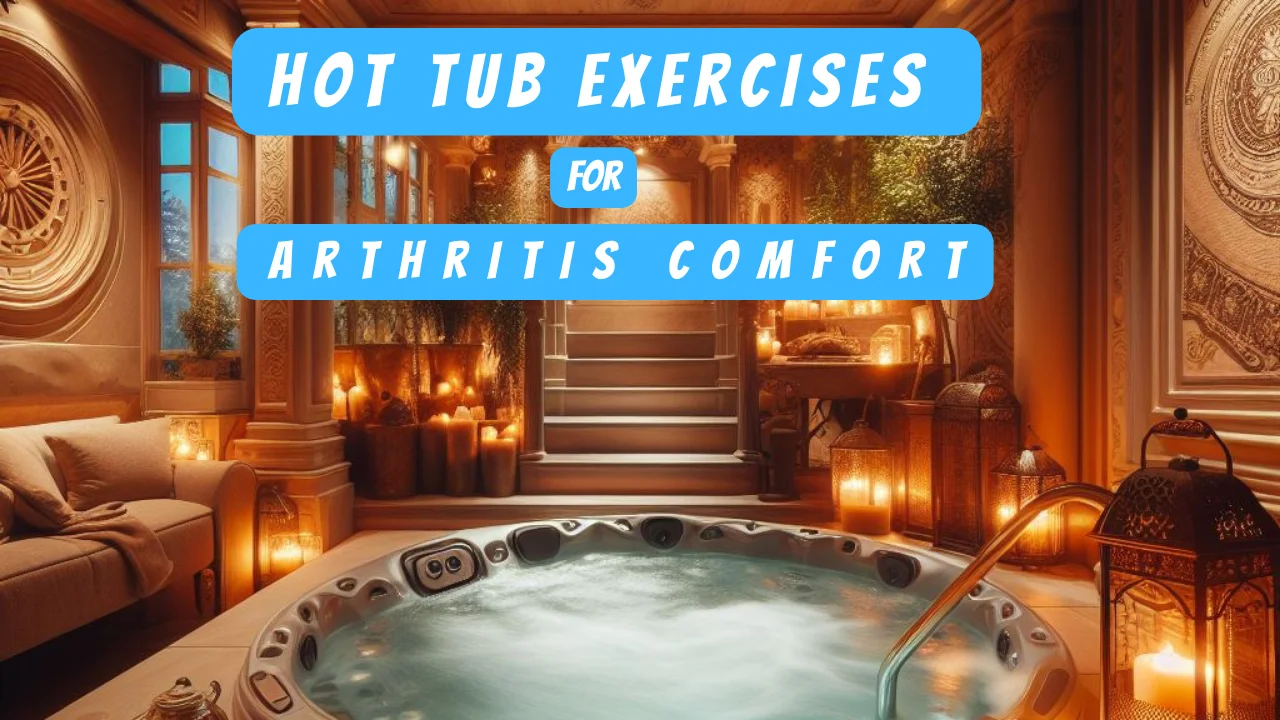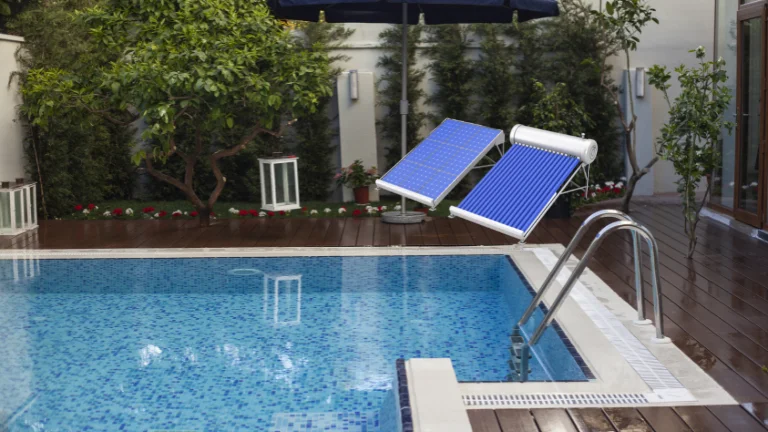Unlocking Relief: Hot Tub Exercises for Arthritis Comfort
Relieve your arthritis pain with these easy-to-follow hot tub exercises. Learn how to improve your mobility and reduce discomfort with these simple, safe practices.
Hot tub exercises can greatly relieve arthritis pain and stiffness and enhance your range of motion. The warm water assists in relaxing your muscles and joints, and the buoyancy of the water makes it easier to move your body.
The Warmth That Welcomes Wellness
- Embrace the Heat: Understand how hot tubs offer more than just relaxation; they’re a vessel for improving joint flexibility and reducing pain.
- The Science Behind the Soothe: Briefly explore how warm water exercises increase circulation, aiding pain relief and muscle relaxation.
Tailored Exercises for Arthritis Comfort
Gentle Stretches
| Move | Description | Benefit |
|---|---|---|
| Toe Touch | Slowly extend your leg, reaching for your toe. | Enhances leg flexibility and reduces knee stiffness. |
| Arm Raise | Gently lift your arms above your head, hold, and release. | It enhances leg flexibility and reduces knee stiffness. |
Strengthening Moves
| Move | Description | Benefit |
|---|---|---|
| Leg Lifts | Lift your leg, hold for a moment, and lower slowly. | Strengthens leg muscles without straining joints. |
| Arm Curls | Using water resistance, curl your arms towards you. | Builds arm strength, supporting joint health. |
Aquatic Aerobics:
- Marching on Spot: A low-impact way to get your heart pumping and joints moving.
- Side Stepping: Enhance your balance and work on those side muscles with gentle resistance from the water.
Hot tub exercises that you may find helpful:
- Arm circles: Stand in the hot tub with your arms at your sides. Make small circles with your arms, gradually expanding the size of the processes. Do 10-15 circles in each direction.
- Leg swings: Stand in the hot tub with your feet shoulder-width apart. Swing one leg forward and back, keeping your knee straight. Do 10-15 swings with each leg.
- Knee raises: Stand in the hot tub with your feet shoulder-width apart. Bend one knee and raise your foot towards your chest. Hold for a few seconds, then slowly lower your leg. Do 10-15 repetitions with each leg.
- Ankle circles: Sit in the hot tub with your feet in the water. Make small circles with your ankles, gradually increasing the size of the processes. Do 10-15 circles in each direction.
- Water walking: Stand in the hot tub and start walking in place. Keep your back straight and your core engaged. Walk for 5-10 minutes.
Before starting any further exercise, Speak to your doctor if you have any concerns or limitations.
Tips for hot tub exercises for arthritis comfort:
- Start slow and gradually raise the intensity and duration of your workouts.
- Listen to your body and stop if you experience any pain.
- Stay hydrated by drinking a quantity of water before, during, and after your workout.
- Avoid using the hot tub for more than 20 minutes at a time.
- Get out of the hot tub if you feel dizzy or lightheaded.
You can also use the jets in your hot tub to massage your sore muscles and joints. Just be sure to avoid using the sprays directly on your joints.
Discover how a hot tub can ease arthritis discomfort and enhance your wellness journey on our page: Unlock Arthritis Relief with Hot Tub Exercises.
What is arthritis?
Arthritis is a term that covers more than 100 different diseases that affect the joints. Depending on the type of arthritis, you may experience:
- Pain,
- Stiffness,
- Swelling,
- and Inflammation in one or more joints.
These symptoms can interfere with your mobility and quality of life. Arthritis has various causes and treatments, depending on the type and severity of the condition. 5 of the most prevalent types of arthritis are:
- Osteoarthritis,
- Rheumatoid arthritis,
- Gout,
- Psoriatic arthritis,
- and Ankylosing Spondylitis.
1. Buoyant Leg Lifts: Float Away the Pain
Imagine the water gently cradling your legs, taking the weight off your joints. Positive leg lifts are your ticket to low-impact resistance training. Stand in the hot tub and let the water’s buoyancy support you.
As you maintain your balance, alternate lifting each leg, extending it straight before you. This movement engages your leg muscles without straining your joints. Perform 10-15 leg lifts on each side to strengthen your lower body.
Pro Tip: Use a pool noodle for added stability during the exercise.
2. Water-Walking Wonders: Step into Mobility
Turn your hot tub into your personal aquatic track with water walking. Begin by stepping forward and lifting your knees as comfortably as possible. As you walk, feel the water’s resistance against your movements—like a gentle massage for your joints.
Aim for 5-10 minutes of water walking, gradually improving the duration as you become more comfy.
Pro Tip: Incorporate varying step heights to engage different leg muscles.
3. Arm Circles: Fluid Motion for Flexibility
Immerse your arms in the warm water while sitting on the edge of your hot tub. With a straight posture, start making gentle circular motions with your arms. Feel the water’s resistance as you move, working your shoulder and arm muscles.
This exercise improves flexibility and increases blood flow to your joints. For optimal results, complete 2-3 sets of 10 circles in each direction.
Pro Tip: Gradually increase the size of your arm circles as your muscles warm up.
4. Seated Spine Stretch: Unwind and Relax
Uncover a comfortable spot in your hot tub where you can sit down. Extend your legs in front of you and reach your arms toward your toes, rounding your back slightly. As you inhale, imagine lengthening your spine and gently stretching further as you exhale.
This exercise promotes spinal flexibility and relaxation, helping to alleviate discomfort in the lower back. Keep the stretch for 20-30 seconds and repeat it 2-3 times.
Check out the Hot water bath post-workout for muscle building: Reasonable?
Pro Tip: Place a towel under your knees for added comfort during the stretch.
[wps_alert type=”primary”]Remember, consistency is critical. Incorporate these exercises into your routine at least 3-4 times a week to experience noticeable improvements in your arthritis symptoms. Always listen to your body and start slowly if you’re new to aquatic exercises. As a wise step, consult your healthcare expert before beginning any new exercise regimen, especially if you have any pre-existing medical conditions.[/wps_alert]
Personal Narratives: A Dive into Relief
Meet Sarah, a Hot Tub Patio community member who found solace in her hot tub after being diagnosed with arthritis. Her mornings, once overshadowed by stiffness and discomfort, are now filled with a routine of gentle stretches and strengthening moves in her hot tub. Sarah’s story is a testament to the power of warm water exercises in transforming the daily lives of those with arthritis.
Before I start any hot tub exercises:
I always check with my doctor and follow these 5 safety tips:
- I check the water’s temperature and ensure it is not too hot for me. The ideal temperature is between 100°F and 104°F (37°C and 40°C).
- I drink plenty of water before, during, and after my session to stay hydrated and prevent overheating.
- I limit my time in the hot tub to no more than 15 to 20 minutes per session.
- I avoid using alcohol or drugs in the hot tub as they can impair my judgment and increase my risk of dehydration or drowning.
- I leave the hot tub slowly and carefully to avoid dizziness or falls.

Several exercises involve the use of a hot tub for arthritis relief.
Gentle Joint Movements
- Description: Gentle joint movements involve slow and controlled motions to improve the range of motion and reduce joint stiffness.
- Benefits: Regular, gentle joint movements can improve flexibility and help alleviate arthritis pain.
- Examples: Moving the arms and legs in a circular motion, gently rotating the ankles and wrists, and moving the neck in a gentle side-to-side motion.
Resistance Exercises Using Jets
- Description: Jets in hot tubs can provide resistance for low-impact strength training exercises.
- Benefits: Resistance exercises can help build muscle strength and improve joint stability, reducing arthritis pain and improving overall joint health.
- Examples include doing leg presses against the jet’s resistance, arm curls with water-filled resistance balls, and sit-ups with resistance from the jet’s water flow.
Aerobic Exercises in the Hot Tub
- Description: Aerobic exercises can help increase cardiovascular fitness and improve joint mobility.
- Benefits: Regular aerobic exercises in the hot tub can improve blood flow and reduce joint inflammation, helping alleviate arthritis pain.
- Examples: Marching in place, jumping jacks, and running or jogging in place are simple aerobics exercises that can be performed in the hot tub.
Stretching Exercises
- Description: Stretching exercises involve extending and holding various muscle groups to improve flexibility and reduce joint stiffness.
- Benefits: Regular stretching exercises can improve flexibility, reduce arthritis pain, and improve joint health.
- Examples: Hamstring, calf, and quad stretches can be performed in the hot tub.
[wps_alert type=”announce”]It is essential to consult with a doctor before starting any hot tub exercises for arthritis relief to ensure that it is safe for the individual’s specific health needs and to receive guidance on proper exercise techniques.[/wps_alert]
Safety Precautions
Hot tub exercises can be beneficial for those with arthritis, but certain precautions must be taken to avoid potential harm.
Importance of Proper Hydration
- Description: Proper hydration is essential before, during, and after hot tub use to avoid dehydration and related health problems.
- Recommendations: Drink plenty of water before and after using the hot tub, and bring a water bottle to the hot tub to drink during the exercises.
Proper Use of Hot Tub Features
- Description: Familiarizing oneself with the hot tub features and using them properly can prevent accidents and injury.
- Recommendations: Read the hot tub owner’s manual and follow all safety instructions, including guidelines for water temperature and time spent in the hot tub.
Monitoring Heart Rate
- Description: Monitoring heart rate is essential during hot tub exercises to ensure the individual is not overexerting themselves and to avoid related health problems.
- Recommendations: Check heart rate regularly during hot tub exercises and stop if feeling lightheaded or experiencing discomfort.
Limiting Hot Tub Use to Recommended Time Periods
Limiting hot tub use to recommended periods can help prevent overuse and related health problems.
Recommendations: Most hot tubs recommend a maximum of 15-30 minutes of use at a time, but it is essential to follow the guidelines specific to the individual’s hot tub.
The Benefits:
- Pain relief: The warm water in the hot tub can help relieve joint pain and stiffness.
- Improved mobility: The buoyancy of the water supports your body, making it easier to move and reducing stress on your joints.
- Increased circulation: The warmth of the water promotes blood flow, which can help reduce inflammation and improve joint function.
- Reduced muscle tension: The heat and massage from the hot tub’s jets can help relax tense muscles, reducing pain and improving flexibility.
- Improved sleep: Soaking in a hot tub before bed can help you sleep better, which is essential for managing arthritis symptoms.
- Mental benefits: The warm water, massage, and relaxation provided by hot tub exercises can also help reduce stress and anxiety, promoting overall well-being.
The Disadvantage:
- Risk of overheating: Soaking in a hot tub for too long can cause overheating, which can be dangerous for people with arthritis, especially those taking certain medications.
- Skin irritation: The chemicals used to clean hot tubs can cause skin irritation or allergic reactions in some people with arthritis.
- Joint stress: While the buoyancy of the water can help reduce joint stress, it is still possible to overuse or over-stress your joints in a hot tub, especially if you have arthritis.
- Accessibility: Not everyone with arthritis may have access to a hot tub or find it challenging to get in and out of it.
- Cost: Hot tubs can be expensive to purchase and maintain and may not be covered by insurance, making it difficult for some people with arthritis to take advantage of the benefits.
- Safety concerns: Some hot tubs may not be adequately maintained, increasing the risk of infections, injuries, or other health concerns for people with arthritis.
[wps_youtube url=”https://youtu.be/smqQn0An93w” responsive=”yes” autoplay=”yes”]
Tips for getting the most out of your hot tub exercises
- While the warm water of a hot tub can feel relaxing, the heat can also provide some health benefits.
- Hot tub exercises can help to improve circulation and flexibility and can also be helpful for people with arthritis.
- Here are some tips for getting the most out of your hot tub exercises:
- First, be sure to start slowly and increase your intensity level gradually.
- Secondly, focus on the range of motion exercises rather than weight-bearing exercises.
- Thirdly, use supportive devices such as noodles or floatation belts to help you stay buoyant and comfortable in the water.
- Finally, consult your doctor or physical therapist before beginning any new exercise program, especially if you have health concerns.
For additional information, visit Hot Tub Patio, or if you’re interested in more reading, see our Guides.
Final Words:
There are many benefits to using a hot tub for people with arthritis. The warmth of the water can help to reduce pain and stiffness in the joints, while the buoyancy of the water can help to reduce pressure on the joints. Hot tubs can also be used for exercises that can help to improve range of motion and flexibility.
Frequently Raised Topics:
Can I exercise in a hot tub? Yes! Hot water can help to reduce pain and stiffness in your joints. That’s why many people with arthritis find relief in soaking in a hot tub or taking a warm bath.
What kind of exercises can I do in a hot tub? Depending on your pain level and mobility, you can do different exercises. For example, if you have mild pain, try stretching or range-of-motion exercises.
How long should I spend in a hot tub? It would be best if you stayed in the water for as long as you are comfortable. If your joints are excruciating and swollen, don’t feel like you have to exercise! Relaxing in a hot tub is good for you, too.
Do I need to take a shower before using the hot tub? Yes. A shower or two will work well to open your pores and prepare them for the heat of the water.
Q. How can a hot tub help me? Hot water soothes swollen joints and muscles. It loosens stiff muscles, increases the range of motion in your joints, and enables you to relax.










